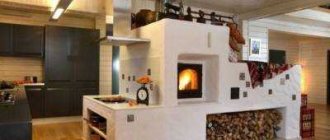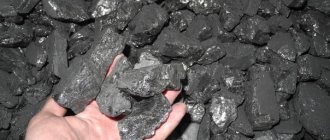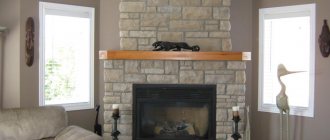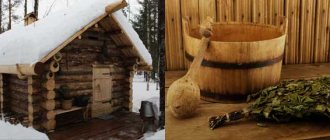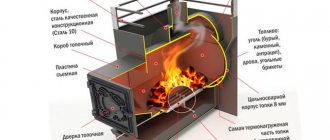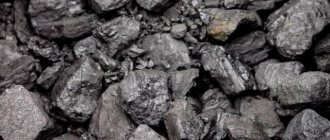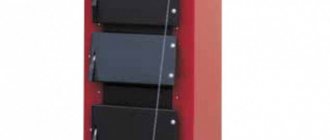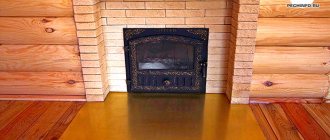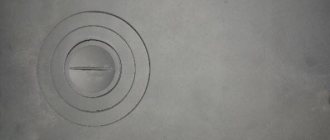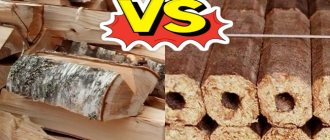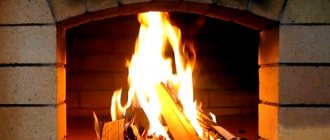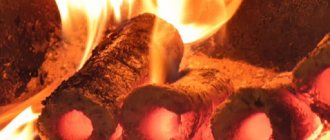The topic of “smokeless” kindling never loses its relevance. With the advent of metal stoves, many owners of summer houses and houses in the private sector are choosing this heating option. The main advantage of air stove heating is low capital costs. And if you choose a fireplace stove that is more efficient, then another problem will be added to the problem of smoke getting into the room - soot on the glass. It settles quickly and is difficult and unpleasant to remove.
Below we will talk about how to light a fireplace stove so that it does not smoke. We will consider two different ignition methods, in which the products of fuel combustion will completely escape through the chimney to the street, as well as preparing the equipment for operation.
What is a fireplace stove?
The appearance of fireplace stoves on the heating appliance market has become a real boon for summer residents and owners of temporary residences. Previously, they had to choose between fast warm-up and high efficiency. An open fireplace, which in a few minutes turns the glacier into a comfortable room for living, is very voracious. Firing with wood requires a lot of attention: if you miss the time of the next bookmark, the fire will go out and the room will cool down as quickly as it warmed up. The efficiency of most modern stoves exceeds 50%, and the intensity of fuel combustion in them is well regulated. But the fast warm-up mode can not be configured on all models.
The fireplace stove is a hybrid heating unit that does not have these disadvantages. The intense combustion of the first bookmark allows you to quickly deliver a large amount of heat into the room. After additional loading, the fireplace stove can be switched to a long-burning mode, maintaining heat release at a level that compensates for heat loss.
The main differences in the design of this unit from a traditional fireplace:
- glass door equipped with a locking mechanism that ensures a tight fit;
- flame breaker - a metal plate that changes the direction of movement of exhaust gases, that is, it organizes smoke circulation.
The main difference from a traditional chimney stove is its lighter weight, which does not require installation on a foundation. At the same time, the design of the fireplace stove retains the blower door and smoke channel damper. Many models are equipped with functions for supplying secondary and tertiary air and self-cleaning glass.
Fireplace insert using Eurowood
When choosing what kind of wood is best to burn a fireplace, you should give preference to briquettes. Eurowood is a fuel designed specifically for stove heating. It has many advantages over conventional logs:
- The flame burns faster when using briquettes than when burning wood.
- Euro firewood is made from pressed wood, the moisture content of the material does not exceed 11%. Due to this, the flame is uniform and does not spark.
- One full load of briquettes will burn for 2 hours.
- During the combustion of Eurowood, heat transfer is 30-50% higher than after using conventional wood.
Eurofirewood is made from pressed wood or peat.
Eurofirewood can be made from wood or peat. Peat briquettes take longer to burn, but the flame will last twice as long compared to its wood counterpart.
Necessary accessories
You need to prepare for the first kindling in your life. There are a few seemingly insignificant things that should be on hand when you start lighting a fireplace in your home:
- Poker . It needs to reach the back wall and the far corners of the firebox, then it will be comfortable for her to work.
- Scoop . It should be light, non-flammable, and fit across the width of the ash drawer door. When choosing, pay attention to metal scoops: they meet all the requirements.
- Canvas mittens . The fire door handle, poker and scoop can become very hot. Canvas mittens will protect your skin from burns and are comfortable to work in. Cloth vachegs, for example, are significantly inferior to them in terms of comfort. They are convenient for holding a thick crowbar, but not a poker.
What should I choose for the new model?
For such models, it is necessary to take care of the flooring - the stench can easily penetrate into the middle of the firebox and does not interfere with the closing of the doors. It is important to avoid choosing on hard rocks, as the stench will burn out longer. The best choice is clear, linden, pine or poplar, but remember that the remaining heat transfer is insignificant, so it is impossible to fully heat it.
What type of firewood is best for a fireplace? The homeowner rules independently, but there is a hidden rule: you must use the same burning agent as is supplied to the device and is prescribed in the manufacturer’s instructions.
Chimney inspection
A chimney clogged with soot will never have good draft. Soot and tar on the internal surfaces reduce the flow area of the pipe and prevent the free movement of flue gases. After the furnace has been idle for a long time, moisture accumulates in the loose soot, and draft will not be established until it has completely evaporated. In addition, such deposits often lead to a fire inside the chimney, which is almost impossible to extinguish. Therefore, before lighting the fireplace, you need to make sure that the chimney is ready for use.
If the pipe is straight, you can use a mirror to inspect it. If it changes its direction, then there should be an inspection hatch at the turning point. It is also necessary to ensure the integrity of the chimney - there are no cracks at the joints.
The chimney should be cleaned before and during the heating season. The most effective way to remove deposits is mechanical. A brush that matches the diameter of the pipe will remove all dirt from the inner walls.
Preparing the firebox
The algorithm for preparing fireboxes is the same for all solid fuel heating devices:
- We take out everything that can be taken out: the “armor”, the grate, the ash drawer.
- We inspect the surfaces for cracks, burns and contamination.
- We make sure that the smoke damper, the secondary air supply damper, the hinges and locks of the glass door are working, and we check the tightness of the latter.
- We clean all accessible surfaces using a scraper and brush, and remove the ash.
Most manufacturers of metal stoves and fireplace stoves recommend calling service specialists to inspect the stove and chimney before the start of the heating season.
Preparatory stage
Without proper preparation, you risk damaging your fireplace or starting a fire. Therefore, before each kindling you should take a few simple steps:
- Check the chimney. It should not contain condensation, creasote or soot. Otherwise, they may catch fire under the influence of temperature.
- Check traction. If it is not there, then all the smoke will go into the house. To check, just light a piece of newspaper or paper and place it in the center of the firebox. If there is draft, the fire will move towards the chimney.
- Check the firewood. They must be dry enough to light. Otherwise, not only will it be difficult to melt them, but it may also cause dangerous sparks. If it comes into contact with a flammable object, a fire may occur. We are no longer talking about damage to the interior due to burns.
What to light the fireplace with? It's quite easy to find out. Consult the operating instructions for your heating appliance. The manufacturer indicates what type of fuel should be used. Most often this is firewood.
Checking traction
If the flame of a lit match or splinter deviates towards the exit of the flue gases, everything is in order with the draft. Otherwise, it will have to be stabilized, otherwise it will not be possible to light a fireplace without smoke. Natural draft depends on many factors, including the strength and direction of the wind, atmospheric pressure, humidity and others. But we can influence only one of them - the difference in temperature outside and inside the chimney.
If the room where the fireplace is located is warmer than outside, problems usually do not arise. There is already a temperature difference. Otherwise, we recommend using one of the following tips:
- Use a hair dryer. To do this, you need to cut a plywood panel that will completely cover the firebox opening, and make a hole in it the same size as the hair dryer nozzle. A stream of hot air will quickly warm up the firebox and remove the so-called air lock from the chimney.
- Open the chimney inspection hatch and burn several bundles of newspaper in it. You can also heat the chimney through the firebox. You need to bring the torch as close as possible to the outlet pipe.
- Place a burning candle in the firebox, close the firebox door and open the vent slightly. Warming up will take about half an hour.
One of the conditions for stable draft is normal supply ventilation. The room where the fireplace stove is installed should not be tightly sealed.
Safety rules for burning a fireplace
A fireplace is an interesting decorative element for any room. But do not forget that everything where there is fire should be as safe as possible. When burning a fireplace, you should adhere to several mandatory rules:
- It is necessary to constantly inspect the combustion opening and chimney, assessing their integrity and degree of contamination. If the fireplace is used very often, a lot of soot and soot will form on the walls of the air duct. Because of this, the draft of the chimney weakens, and the smoke begins to partially leak into the room. If there is a high concentration of carbon dioxide in the room, there is a danger of poisoning or burning.
- Ignition should be carried out gradually. You should first use flammable materials such as small logs, sawdust and old newspapers. And only after they have burned sufficiently, add fuel for greater heat.
- During operation of the fireplace, the damper that regulates the draft in the fireplace must be slightly open.
- Do not throw trash, painted logs, or add flammable liquids into the fireplace. The smoke from such substances is toxic, which can cause poisoning.
It would seem that if you put as much fuel as possible into the fireplace, the flame will burn brighter and there will be more heat. But this is far from true. All the heat will go into the pipe. The fuel will burn the same as with a smaller load. It is also worth remembering that if you fill the firebox to the top with solid fuel, the walls of the fireplace may be damaged, which at best will shorten the life of the stove, and at worst will lead to a fire. Therefore, it is advisable to use fireplace fuel with caution, following certain rules.
Preparing fuel
Most fireplace stoves are designed to burn wood. But there are also models that can operate on coal and fuel briquettes. In any case, you will have to light the fireplace stove with wood, and switch to the “main” fuel from the second bookmark. And for this they need to be properly prepared:
- Trees are cut down in late autumn or winter, when the flow of sap stops.
- Pay attention to the depth of the firebox: finished firewood should not protrude outward. The maximum log length for a factory stove-fireplace is indicated by the manufacturer in the user manual. The logs are cut to this size.
- To achieve the required humidity, the logs are split and stored under a canopy until the next heating season.
- The firewood is dried indoors. This may take from 1 to 3 days (depending on outdoor storage conditions).
If the residual moisture content of the wood is more than 20%, lighting the fireplace without smoke will be problematic. In addition, evaporating water will condense on the internal stacks of the chimney and cause soot to settle.
About firewood
Those who have installed wood-burning stoves in their home will first have to ensure that only dry firewood gets into the firebox. Damp wood takes a long time to burn and does not burn completely. Water vapor in combination with combustion products produces a lot of soot that pollutes the chimney, and drying damp logs in the firebox uses up the heat that could warm the room. Therefore, it is recommended to purchase firewood long before the start of the heating season and dry it outside under a canopy in the summer. It is also good to place a small amount of logs next to the stove for final drying, designed for one or two bookmarks. Tiled stoves are often equipped for this purpose with built-in compartments for firewood; heating and cooking stoves with or without a water circuit can have a drawer for them, and if there is neither one nor the other, you can use a separate firewood rack.
It is advisable that firewood from the same type of wood be used in one kindling, since different types will burn unevenly. Birch and oak firewood are considered the best in terms of their calorific value. Firing a stove with resinous rocks is not recommended, since the resin deposited on the walls of the chimney will be almost impossible to clean off. The logs should be 5-10 cm shorter than the length of the firebox and not too massive - 6-8 cm thick.
Lighting up a fireplace stove in the classic way
Lighting the stove in the classical way implies the spread of combustion from the bottom (from the grate) to the top. The first filling is carried out in the following order:
- a lump of crumpled paper or a mound of birch bark;
- thin chips with a diameter of up to 1 cm;
- small logs (up to 3 cm).
The wood is not laid too tightly so that air can flow freely into the gaps. To light a fireplace without smoking, it is important not to overload the firebox. The first tab should occupy about 10% of its volume. After the paper catches fire, you need to carefully (without slamming) close the fireplace door. In this case, the vent should be slightly open.
Firewood of regular thickness is laid after the wood chips have completely burned out. There should be hot coals with some flame left. An attempt to lay thick logs immediately often leads to the fact that the combustion products of the paper cool down and do not have time to heat the wood chips to the ignition temperature. This is accompanied by intense smoke and sometimes stalling of the draft. Often massive logs located on top sag and disrupt the structure of the bookmark.
Temperature in the stove when burning wood
Our country has an abundance of forests in its vast expanses; it is for this reason that firewood was, is and will be our most popular type of fuel. By burning chopped logs you can get a large amount of heat. But it’s worth considering: the stove can be heated as efficiently as possible only after reaching certain temperature readings.
The flame temperature has a direct relationship with the type of wood used to work:
- For example, poplar gives a maximum temperature of only 500 degrees. This makes it not very suitable for kindling in winter, as well as in rooms with a large area.
- An excellent solution would be to use oak logs in your work - their thermal indices are 900 degrees.
Temperature depends on the type of firewood
Top burning kindling
There is an alternative way of stacking firewood to light a fireplace, in which combustion occurs from top to bottom. The stacking begins with the thickest logs, wood chips are placed on top, then birch bark and paper. With this method, the firebox can be filled approximately 2/3 full. Even if the stove is cold and the draft is uncertain, the paper, which is located almost at the very outlet pipe, will warm up the chimney.
A prerequisite for starting kindling is that the ash pan must be tightly closed so that combustion air flows through the open opening of the fuel channel. When the draft stabilizes, you can open the blower and lock the glass door. After the bookmark burns out, a new portion of firewood is loaded. The fireplace stove is already warm enough. Therefore, if the room also becomes warm, it can be switched to long-burning mode.
To clearly demonstrate how to properly light a fireplace without smoke with an alternative stacking of firewood, we recorded a video that shows in detail all the nuances of this method. You can ask any questions you are interested in in the comments to the video by subscribing to our channel on YouTubeFornaksFilm
How to choose quality firewood
The method of storing firewood also affects the heating of the room. If done correctly, they retain their natural properties. Then all that remains is to learn at first glance to identify high-quality wood from rotten, too damp wood that burns like “gunpowder” with minimal heat release. It is also important to consider the type of wood-burning fireplace - with an open firebox, glass or solid door. If you don't "guess" it, it's easy to get into trouble. For example, when pine burns, it shoots out embers and creates a fire risk. Characteristics of firewood for heating the stove:
- burning duration;
- combustion intensity;
- heat transfer;
- volume of smoke generated;
- amount of ash.
Ideally, firewood should burn for a long time, produce a lot of heat, and a minimum of smoke and waste. But in practice, you will have to find a compromise, which will be easier if you follow the rules. So, you cannot heat the stove with freshly cut wood. It will burn sluggishly and smoke heavily (due to the large amount of moisture). You won’t get much heat from them, and it will be difficult to light such logs. Before use, the firewood is dried in a woodpile for a year or at least a summer period. To reduce preparation time, the forest is cut in winter, when the movement of sap is slower. It is better not to do any harvesting in spring and summer. The history of firewood is learned from sellers in advance, although they can embellish the quality for the sake of sale. In any case, a good log should produce a ringing sound when it hits another.
Firewood for closed fireplaces
Stoves with a closed firebox are universal. They work regardless of the type - whether it smokes or “shoots” coals, whether the logs are dry or “hiss” when burning. From which it follows that after installing such a fireplace there will be no special problems with the choice of firewood. True, it is still recommended to follow the rules when purchasing. Dry wood will give a higher temperature, although it will burn relatively quickly (burnout time is adjusted with a valve). What exactly to buy depends on where you live and what breeds grow in the area. If you bring firewood from afar, heating will be expensive. Therefore, everyone chooses the best option for themselves. Popular are poplar, pine, ash, willow, and linden. Sometimes they choose “store-bought” fuel, Euro-wood. They are pressed from sawdust of different species, depending on what waste remains after the production of furniture and other wood products.
Poplar
Very cheap fuel is poplar wood. These trees grow quickly and are unpretentious to the environment. This is their only advantage. Otherwise, the relevance of the purchase is questionable. So, poplar produces extremely little heat when burned, and this happens quickly. The maximum it is suitable for is heating a dacha on cool summer nights. Such firewood is rarely stored for the winter, only in case of emergency.
Ash (willow, linden)
Another affordable option. Trees like linden, willow or ash grow well without maintenance, near populated areas and holiday villages. Willow has high thermal efficiency and produces little smoke when burned. Sometimes it is even bought for open fireplaces. A stash of linden logs burns slowly, with high heat transfer. Ash does not need to be dried; it is quite “dry” in its natural state. The only disadvantage of such firewood is the relatively small number of trees compared to the same coniferous species.
Eurodrova
In conditions of shortage, when there are few trees growing in the vicinity or when logging is prohibited, it is easier to buy briquettes. They are produced in the form of rectangles, cylinders, and polyhedra. This type of firewood does not require drying, since quite a lot of time has passed since it was cut down. Briquettes burn almost completely, do not give off an unpleasant odor, and moderately emit smoke and soot. But the burnout rate is high, which is why they are often purchased for long-burning fireplaces. In conventional ovens they will provide a lot of heat in a short time.
Fireplace insert with glass
A fireplace with panoramic glass as a door creates a special coziness. Such stoves are made only wood-burning, because this type of fuel has the required aesthetics. Sometimes they sacrifice the warmth and convenience of delivery in order to spend a romantic evening with family and friends. Rules for selecting firewood:
- “smokeless” species such as aspen, alder, beech, oak;
- maximum fuel moisture 20%;
- deciduous trees without resin content.
It is important to eliminate or at least reduce contamination of glass with soot and soot. The pine will stain it in the very first firebox. The same applies to damp firewood and smoky woods. Open fireplaces are heated for decorative purposes, first of all, so price plays a lesser role than smokeless combustion and minimal release of “dirt.”
Firewood for open fireplaces
When operating an open fireplace for a wood-burning home, you have to comply with special fuel requirements. So, logs should not spark or emit an unpleasant odor when burning. You will also have to choose a fuel that burns slowly despite the unlimited access of air. When planting the same pine tree, the owner will receive the only advantage - a pleasant smell. Only without much heat, with the risk of coals falling out. Usually hardwoods such as oak, beech, birch, and alder are chosen. The dense structure will not allow the logs to burn out quickly; when burning, large coals are formed, which continue to give off heat and create a decorative effect. Sometimes they also buy aspen.
Alder
Royal fuel - logs have different shades of orange and look “solid” next to the fireplace. And such firewood produces little smoke, a pleasant smell and acceptable heat transfer. It is sometimes said that alder smoke cleans chimneys. In the old days, alder was stored for heating bathhouses “black-style,” when it was important to quickly and well heat the room with minimal risk of fumes from smoldering coals. They also note that alder firewood does not require pre-drying.
Birch
Country classic - birch firewood. This is a native Russian type of fuel. The logs flare up quickly and burn well even when raw. True, undried ones provide less heat; before burning, they should be kept in a woodpile for at least one year. If you constantly use birch firewood, you have to regularly clean the chimney. The composition of birch includes resins, which gradually accumulate on the walls, impair draft and lower the temperature in the firebox.
Aspen
Aspen is considered more of a decorative fuel, capable of burning very beautifully. This firewood is incapable of creating heat like birch or oak. Sometimes they are used to clean soot from chimneys. When aspen logs burn, you can hear the cleaning process. Soot falls in whole layers. They are no longer useful, which is why they are rarely bought.
